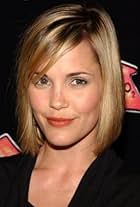APPLY FOR ADMISSION
FIRST YEAR MEISNER ACTING PROGRAM

BEGINS
SEPTEMBER 10TH

Call To Schedule an Interview
(917) 794-3878
Real Dialects in a Fantasy World

The author of the books, George R.R. Martin has spoken extensively about the fact that his story loosely parallels and was inspired by the factual Wars of the Roses, an internecine struggle from 15th Century Europe. Many of the historical figures and houses found in the record of the Wars of the Roses find analogous depictions in Martin’s novels. From Cersei drawing inspiration from Margaret of Anjou (the She-Wolf of France), to Tyrion, the misshapen, intelligent mastermind who is reminiscent of Richard of Gloucester (later King Richard III). Even the names of two of the historical warring houses, “Yorks and Lancasters”, bear similarity to the fictional “Starks and Lannisters. “
One thing Martin didn’t address in his novels is the audible sound of the characters’ speech. As a written medium, his novels don’t necessitate the use of dialects to distinguish between characters and their regions of origin. In adapting the novels for television, however, the creators made the brilliant decision to use real-world dialects that suggest some fun and interesting correspondences with Martin’s imaginary universe. It’s not difficult to imagine the version of Game of Thrones, created by Americans for American television that uses no specific European dialects, and instead has characters speaking with general American dialects. There are already plenty of barriers to following the complicated plot and storylines of the show, so I could understand producers making the argument that they didn’t want to complicate things further by adding numerous foreign dialects. Thankfully, however, the creators believed that adding all of these real world dialects would only serve to heighten and enrich the experience, and in some cases clarify it.
The iron throne of this fantasy kingdom is located in Kings Landing, which for dialect purposes, has now become analogous to London. The actors portraying characters from this region therefore use varying versions of a London dialect. The Lannisters, the Tyrells, and the Baratheons are all using speech and pronunciation patterns from London and its surrounding regions. The creators have even gone out of their way in some cases to have actors from very diverse places (e.g. Copenhagen and New Jersey) speak with this London dialect.
Moving north to the Starks, the actors portraying Ned and Jon Snow use a “North Country” or Yorkshire dialect. Not only does this line up geographically to represent a region north of London, but it also tells us through the dialect that when Ned travels to Kings Landing, he is very much an outsider to the culture and politics that prove to be so challenging for him. This show makes another compelling choice with dialect in having Catelyn Stark (Ned’s wife) speak with a Southern English dialect to show that she doesn’t come from the same place as her husband, but rather was born further south. This more southern dialect also takes root in the speech of Catelyn’s eldest daughter, Sansa, who emulates her mother’s ladylike qualities and cultural beliefs, as well as her speech patterns.
Looking at the show in an even broader scope, the real dialects expand with the fantasy world map to show how different imaginary cultures may correspond to real peoples from our own planet and history. In this way, the creators use dialects to help the viewers orient themselves and build some geopolitical parallels due to our associations with these different dialects. The actors whose characters come from the southernmost tip of this continent use Spanish accents (the Martells), which complement the Moorish architecture of the set. Some characters from the distant north (Tormund) use Norwegian accents. Moving further east, Dany communes with many cultures who use various Middle-Eastern dialects, letting us begin to identify these regions as being roughly analogous to our own Iran and Syria.
The use of dialect in this show is something that continues to keep my interest piqued. Every week I’m excited to see how a new character or location might be portrayed with specific speech choices. I mean, I also tune in to see Sansa get her ultimate revenge, but it definitely helps that the creators have chosen to put so much thought into their dialect/accent choices!
Recent Post
STUDENT TESTIMONIALS
“I was placed in the intense reigns of Charlie Sandlan. I became a better artist, actor, friend, sibling and daughter because of the studio. Even now, I crave the studio every day. What I learned is present in my work every day. I truly believe in everything they stand for.”

“Maggie taught me that I could control my work, my acting, and to throw all of the bullshit out that I had in my head about ‘what I should be doing’ and to just listen and respond honestly, in the moment. She gave me a craft. She is, quite simply put, THE BEST.”

“Maggie Flanigan taught me the true meaning of artistry, passion, and professionalism. I am certain that I continue to work as an actress because of my training with Maggie. At every audition and every performance, her guiding voice is with me. It is a gift beyond measure.”

“Maggie Flanigan is uncompromising, her instincts as a teacher are razor sharp. She doesn’t miss a beat”

“Maggie Flanigan has been one of the most important people in my artistic life. I want to work with Maggie trained actors. As an actor myself, she is my first source. I do not say this lightly, if you are serious about acting, and willing to work very hard, then go to Maggie.”

“Maggie helped me find my sense of truth, an actors greatest asset. Maggie is an expert at instilling that vital ingredient, which allows an actor’s potential to become limitless. My work will forever be rooted in the clarity and honesty she helped me develop.”

“After working for ten years, I did the 2 year program, and now feel that I have the tools I need to become the actor I’ve always dreamed of being. Maggie Flanigan instilled in me a clear sense of truth and a standard of perfection. I am a better actor because of this studio.”

“As an actor, the core of what you have to rely on is your sense of truth and humanity. Maggie allowed me to discover and embrace mine. Trusting my sense of humanity and truth has given me the ability to take risks in my work and my career decisions.”

“Maggie Flanigan has the unique ability to get an actor to the essence of what is true in a moment. She creates a safe and caring environment in which to work.”

“Maggie Flanigan introduced me to my own spirit and my own sense of Truth. Her passion for teaching and ability to communicate are rare gifts to any actor looking for a technique to set his or her talent free. Maggie’s voice has been the one constant guide in my career.”





